Should I change oil or electric boilers to solid fuel boilers? Will home heating costs go down? What are they - solid fuel heating boilers?
Let's figure it out.
Selecting a heat source
Expenses
To begin with, let's find out how cheap solid fuel heating boilers are compared to other sources of thermal energy. Fortunately, information on the cost of a kilowatt-hour of thermal energy obtained in various ways is easy to find.
An important point: information is often presented somewhat biased.
For example, manufacturers of heat pumps willingly provide statistics according to which their heating method is the cheapest.
Of course, on the websites of gas equipment sellers you will find a completely different price breakdown.
Let's take data from an independent source.
They may not accurately reflect the current situation in individual regions; however, the approximate ratio will remain.
- A kilowatt-hour of heat obtained by burning main natural gas will cost about 0.52 rubles.
- for the production of a kilowatt-hour of heat, exactly one kilowatt-hour of electricity will be spent, which on average in Russia now costs about 3 rubles. When using a heat pump of any type instead of direct heating, the price of heat will decrease by about 3-3.5 times.
- During the combustion of diesel fuel, a kilowatt-hour of heat released will cost about 2.8 rubles.
- A solid fuel heating boiler when burning wood will provide us with costs at the level of 0.8 r / kWh.
- A coal-fired solid fuel heating boiler will increase costs up to 1.2 r / kWh.
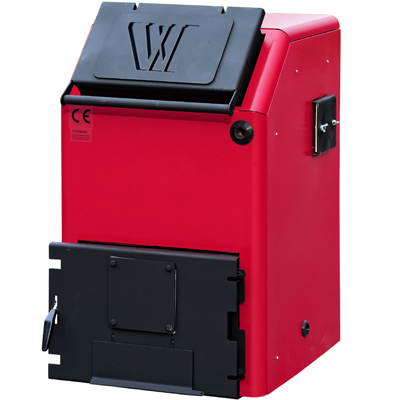
The conclusions are obvious.
- Gas is the cheapest. If your home has a gas main, the choice is obvious.
- The second place is shared by solid fuel heating boilers for wood and.
- On the third - a solid fuel heating boiler that runs on coal.
The convenience of use
Cheap heating equipment evaluation begins but does not end. Another important factor is ease of use.
By what criteria can this parameter be evaluated?
- The ability to work in a completely autonomous mode for a long time.
- The ability to maintain the set temperature in the room with high accuracy. We emphasize: it is indoors. The climate in the house is non-linearly related to the temperature of the coolant: the weather outside affects it at least as much.
Any heat pump, regardless of the source of low-grade heat, is a fully automatic system and, as a rule, equipped with electronic thermostats already in the factory.
Gas boilers, as you know, are divided into non-volatile and equipped with electronic ignition. In the former, a simple mechanical thermostat is implemented; the latter are capable of using remote sensors in any part of a heated house. Neither of them require frequent maintenance.
What, in terms of convenience, can solid fuel heating boilers offer us?
- Protection of a solid fuel boiler against overheating of the coolant is, as a rule, the same simplest mechanical thermostat, which, when the critical temperature is reached, closes the blower by means of a lever and a rod.
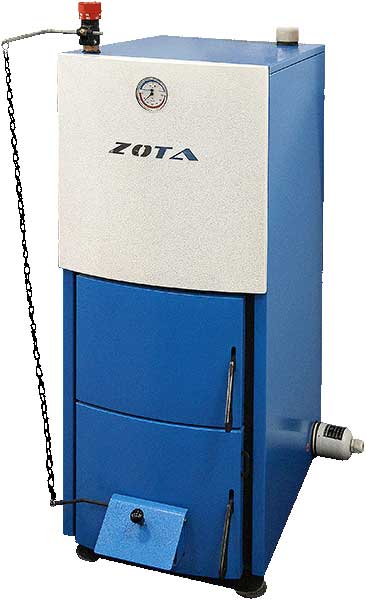
- Remote temperature sensors can only be used by gas-generating boilers, which require forced air to maintain two-stage fuel combustion. The fan speed in this case is regulated by simple electronics.
- Finally, autonomy. With her ... let's say delicately - everything is bad.
Do-it-yourself simple low-power devices burn a supply of firewood in 1-3 hours; the absolute record holder in terms of burning time is the Lithuanian solid fuel boiler Stropuva, which, thanks to an unusual fuel combustion scheme, is able to work on one tab for up to one and a half days.
We will analyze the principle of operation of upper combustion boilers of Stropuva and other manufacturers in the corresponding section of the article.
However, as usual, the devil is in the details.
- Main natural gas is not available everywhere, and the use of bottled propane practically equalizes the cost of heating with an electric boiler.
- An air source heat pump only works effectively at winter temperatures around zero degrees Celsius. With a decrease in street temperature, the consumption of electricity for the production of a kilowatt of heat increases; at -25 and below, air source heat pumps simply do not work.
- operating according to the “water-water” scheme are more versatile, but in terms of purchase and installation costs they are comparable to the costs of building a small house. For comparison: the Russian steel boilers Karakan and Dobrokhot with a capacity of 12 kW cost about 14-16 thousand rubles, and the Ukrainian 14-kilowatt Cleaver can be bought for 2,500 hryvnia (10,000 rubles at the current exchange rate).
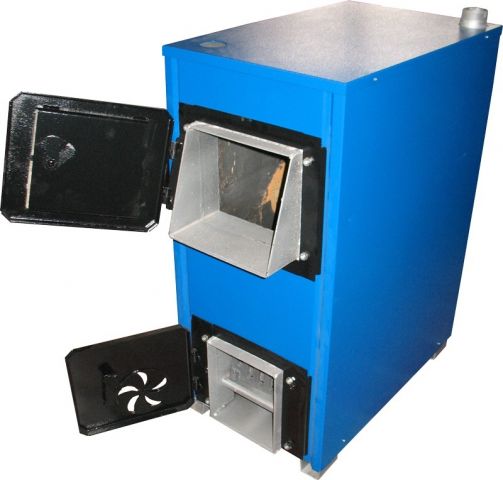
That is why in practice, where the gas pipeline is located at a considerable distance from the construction site, it is solid fuel heating installations that are leading in popularity.
Boiler types
Let's try to figure out how devices can be classified.
Material
- Steel is durable and allows you to make the walls of the boiler and heat exchanger relatively thin, and, therefore, cheap. However, the downside of low cost is limited durability. It is from steel that a huge number of home-made structures are made. Instructions and drawings, if desired, are online in minutes.
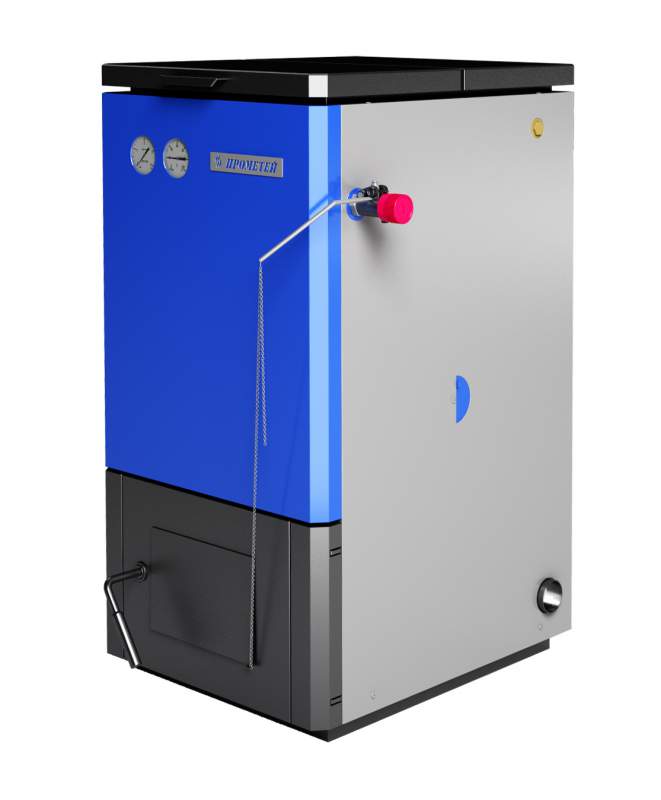
Useful: the service life of a steel firebox is significantly increased if it is lined with refractory bricks.
- Cast iron is more typical for massive devices with a power of 20 kW or more.. Low mechanical strength (primarily in relation to shock loads) makes the walls of the boiler and the firebox thick enough; as a result, the weight of the boiler can reach 250-300 kilograms.
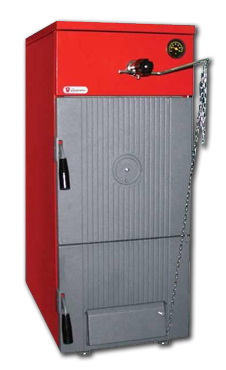
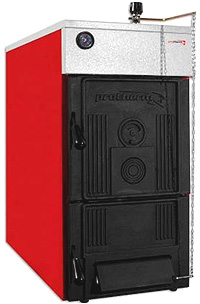
Type of fuel
- Wood boilers are able to work only and exclusively on wood with a moisture content of not more than 20%.
- Coal, respectively, are optimized for the higher combustion temperature of coal.
- Pellet are designed for the use of woodworking waste pressed into granules. The advantage of devices of this type is in the automated supply of fuel from the bunker, which makes it possible to make the loading quite rare; however, in practice, it is far from possible to ensure an uninterrupted supply of pellets far from everywhere, and their cost is incomparable with coal or firewood.
- Universal products can use different types of fuel. A variety of combinations of thermal energy sources are possible: for example, a solar burner can be mounted in a separate firebox of a wood-burning boiler; a coal-fired boiler can be supplemented with several heating elements in a heat exchanger tank, and so on.
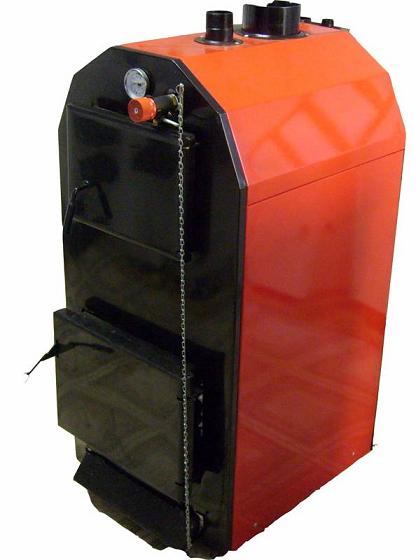
Yaik KSTGZH-16A after installing the burner in the firebox is able to switch from wood to gas or diesel fuel.
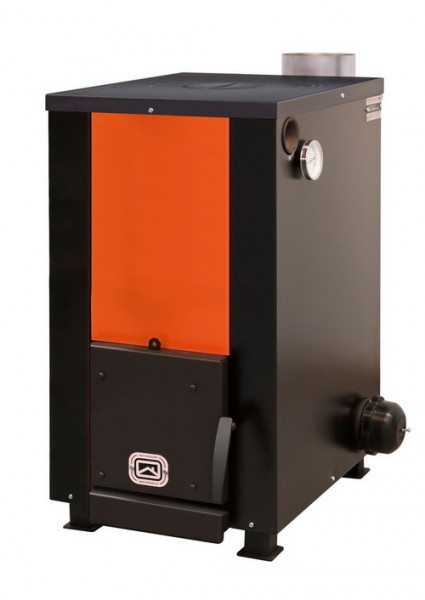
Traction type
- Natural draft comes from the difference in density between the hot combustion products and the surrounding air. The advantage of the scheme is non-volatile; the disadvantage has already been mentioned: only the most primitive control of the temperature of the coolant is possible.
An important point: the restriction of air flow through the blower means, among other things, a drop in efficiency due to incomplete combustion of the fuel.
- Forced draft allows you to flexibly adjust the thermal power of the device using programmers and remote thermostats; however, in the absence of electricity, the boiler will be shut off automatically.
Given the specifics of the Russian outback, where wire breaks and thefts are not uncommon, it is not easy to make an unambiguous choice in favor of such a solution.
Non-standard solutions
There are several designs that deserve special mention.
Pyrolysis (gas generating) boilers are distinguished by the fact that in them the combustion of fuel is divided into two phases. During the combustion of wood with limited access to oxygen, the so-called pyrolysis gas is formed, which is then burned in a separate chamber.
What is the result?
- The efficiency increases. For the best boilers of this type, it reaches 92%; in addition, the efficiency does not drop when the thermal power is limited.
- There is a minimum of solid waste.
- The regulation of the combustion process is made more flexible.
- Firewood is required every 10-12 hours.
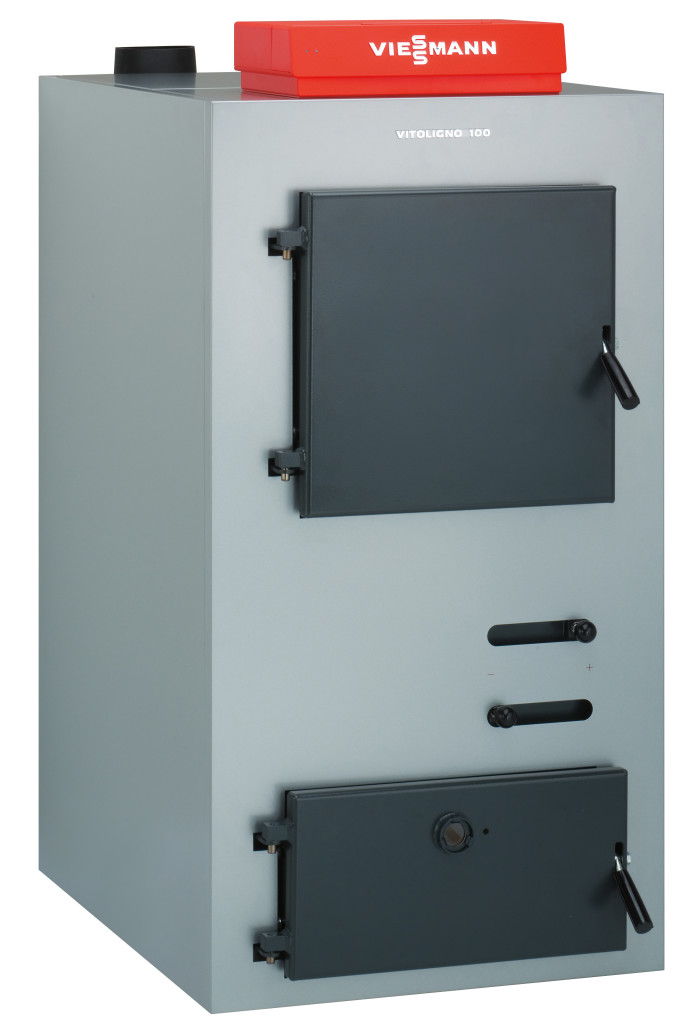
Upper combustion boilers require loading and does once every 20-30 hours. Combustion occurs only in the upper layer; firewood, coal or peat smolder with the release of pyrolysis gas, which burns out in the same furnace, but behind a massive metal separating disk. The ash is carried away by the ascending air current.
![]()
Heating and cooking boilers are equipped, in addition to the built-in heat exchanger, with a cooking surface above the furnace.
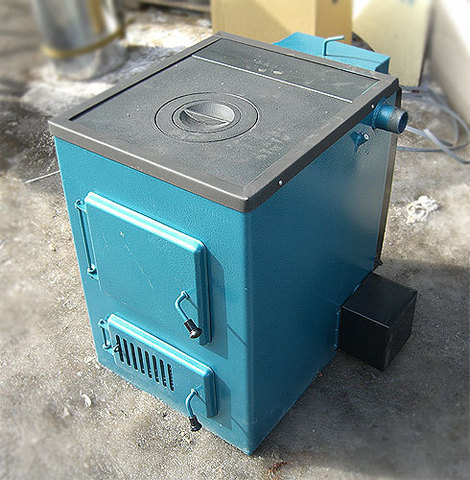
In the photo - heating and cooking Smoke AOTV-18.
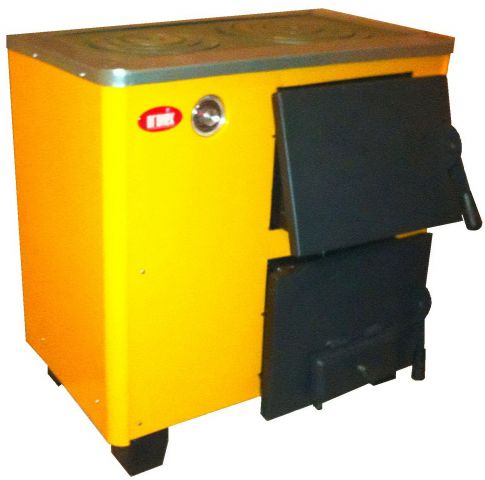
Output
Modern solid fuel heating boilers are a worthy and, most importantly, inexpensive alternative to electric and liquid fuel heating installations. As usual, in the presented video in this article you will find additional information on this topic. Warm winters!








